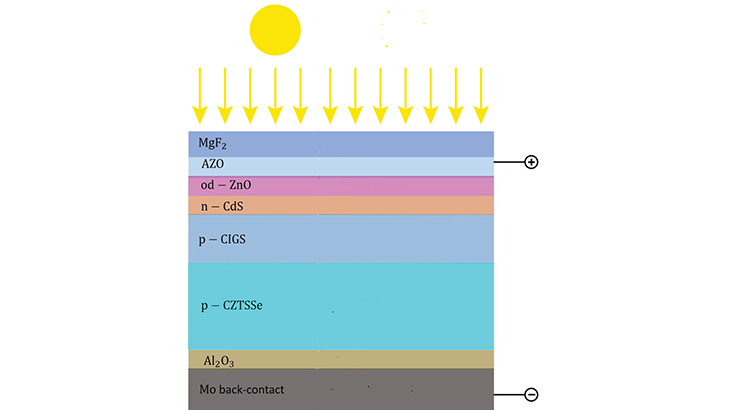Double-absorber Thin-film Solar Cell with 34% Efficiency
ID# 2020-5177
Technology Summary
CIGS solar cells deliver higher efficiency than CZTSSe solar cells whether the bandgap energy in the absorber layer is homogeneous or graded. However, CIGS contains indium, which is not plentiful on our planet, and requires a costly and time-consuming manufacturing process to implement. On the other hand, no constituent element of CZTSSe suffers from that constraint. The research team incorporated absorber layers of both CIGS and CZTSSe into a single solar cell, boosting the efficiency to approximately 34%, with a fill factor of 0.83. Provided the bandgap energy is optimally graded, the CIGS layer can be only 300-nm thick and the CZTSSe layer 870-nm thick, lowering the requirement for the scarce and expensive materials, but providing high efficiency. This solar cell design is promising for ubiquitous in-device microwatt-scale generation of electricity.
Application & Market Utility
Power-conversion efficiency is a critical factor for the wider adoption of solar-cell modules. Thin-film solar cells are cheap and easy to manufacture, but their efficiencies are low compared to crystalline-silicon solar cells and need to be improved. A thin-film solar cell with two absorber layers (instead of only one), with bandgap energy graded in both, can capture solar photons in a wider spectral range. The resulting higher efficiency can enable in-device energy generation as well as lower costs associated with manufacture and installation of solar cell arrays.
Next Steps
The research team seeks collaboration and licensing opportunities.

